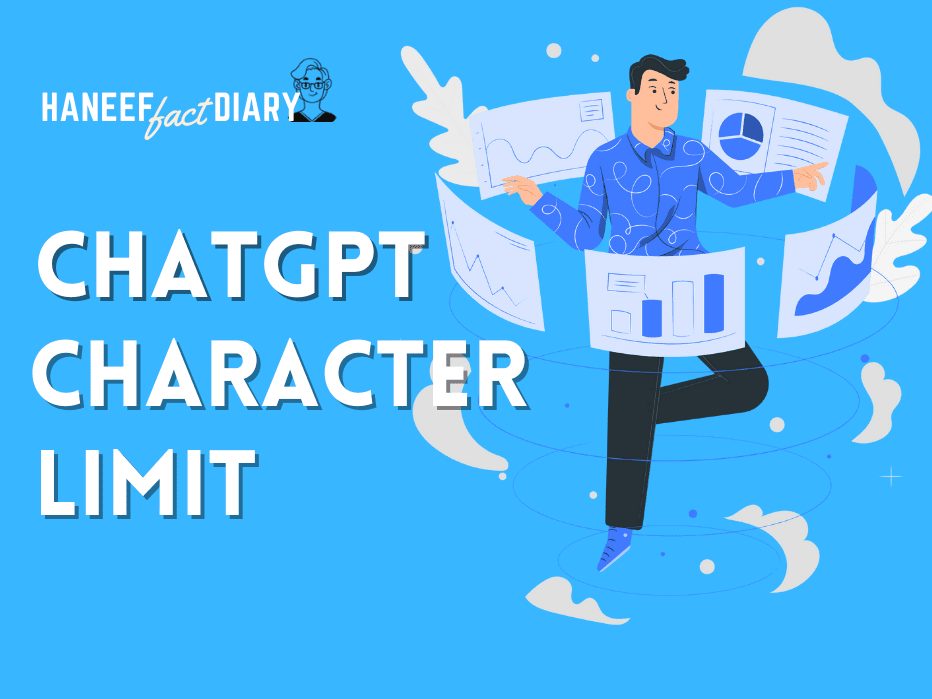Character Limit ChatGpt As artificial intelligence (A.I.) technology continues to advance, more businesses are turning to A.I. tools for efficiency in operations and improved customer experiences. Two popular A.I. tools available today are ChatGPT and STAN A.I. While ChatGPT boasts an impressive language model that generates human-like responses, many users wonder if there is a character limit with it. In this blog post, we’ll compare ChatGPT with STAN A.I. –an A.I. tool without such limitations –and examine each tool’s advantages side by side.
ChatGPT and Character Limits
ChatGPT is an OpenAI language model designed to generate text responses to various prompts. However, its character limit of 2048 characters per response means that if you ask ChatGPT a question that requires longer answers, it may cut off midway or provide an incomplete response.
Yes, ChatGPT has a character limit on messages that can be processed. The exact character limit may differ depending on which platform or application you use to interact with ChatGPT.
Generally, most messaging platforms have a character limit of around 4000 to 5000 characters per message. However, this may differ depending on the platform or application. It’s always wise to consult the platform’s documentation or help files for more information regarding what the character limit is.
Remember, even if your message exceeds the character limit, you can still communicate with ChatGPT by splitting it up or sending multiple messages. It is generally best to keep messages concise and direct so ChatGPT can provide accurate and helpful responses.
Related: ChatGPT Examines the Future of AI-Generated Writing: Will It Steal Our Jobs?
Factors Affecting ChatGPT Character Limit
There are various factors that can affect the appropriate ChatGPT Character Limit for different NLP tasks. These factors include:
- Model Size: The size of a ChatGPT language model can affect its character limit. Larger models may be able to handle higher character counts, while smaller ones need lower limits.
- Data Processing and Encoding Methods: The data processing and encoding techniques employed can influence the appropriate character limit. For instance, compression techniques or tokenization reduce input data volume, enabling higher character limits.
- Language and Text Complexity: The complexity of a language’s grammar may dictate an appropriate character limit. For instance, languages with complex sentences may need lower character limits in order to guarantee the accurate generation of responses.
- Application Type: The type of NLP application can influence the character limit appropriately. Chatbots, for instance, may need lower character limits to replicate human-like conversations while machine translation applications need higher limits to capture all language nuances.
- Input Type: The type of input can affect the appropriate character limit. For instance, short and direct questions may require lower character limits, while longer and more complex inputs may necessitate higher limits.
Overall, selecting an optimal ChatGPT Character Limit for NLP tasks necessitates careful consideration of several factors. It is essential to assess these elements thoroughly in order to guarantee optimal model performance and accuracy.
Best Practices for ChatGPT Character Limit
Setting an appropriate ChatGPT character limit for NLP tasks requires considering various factors that were previously discussed. Here are some guidelines to ensure you select the appropriate character limit according to language models in ChatGPT:
- Evaluate Model Size: Take into account the size of your ChatGPT language model when deciding an appropriate character limit. Smaller models may need lower limits, while larger ones can handle higher character counts.
When selecting an NLP application, the type of language must be taken into account when determining the character limit. Chatbots may require lower character limits to mimic human-like conversation, while machine translation applications may need higher limits. - Analyzing the Input Type: Assess the input type to determine the appropriate character limit. Short, direct questions may require lower limits, while longer or more complex inputs may call for higher ones.
- Optimize Input and Output: Optimize input and output based on the selected character limit by employing compression techniques or tokenization to reduce input data.
- Test and Optimize: Evaluate the ChatGPT language model with various character limits, then fine-tune it accordingly for maximum performance and accuracy.
- Monitor Performance: Regularly monitor the performance of the ChatGPT language model to guarantee it has selected an optimal character limit for NLP tasks. This can be assessed through metrics such as response time, accuracy, and consistency.
In conclusion, selecting an optimal ChatGPT Character Limit for NLP tasks necessitates careful consideration of several factors. Best practices such as assessing the model size, taking into account application type, analyzing input type, optimizing input/output, testing, and fine-tuning, and monitoring performance can help set an appropriate character limit that ensures optimal model performance and accuracy.
How to get longer responses from ChatGPT?
If the bot’s answers are getting cut off midway through a response, as many users have reported, there are some methods you can use to extend these answers.
Ask the Bot to Continue
When the bot provides an incomplete answer or randomly drops off, phrases like ‘continue’ or ‘go on’ can be used to instruct it to continue with the current answer. This may not work for everyone; try different words and phrases and see if that works better for you. Alternatively, ask the bot to rewrite your response so it is longer than specified length.
Ask more Detailed Questions
To get more out of ChatGPT, ask it more specific questions. Remember that since the bot uses your prompt to gather data for an answer, larger inquiries will guarantee a more detailed response.
Break Up Your Question
Instead of one long, complex query, why not ask the bot multiple questions at once? Breaking up the inquiry into simpler parts will help the bot better comprehend your input and provide longer, more detailed responses. This works much better than other solutions since you’re automatically providing more precise data to analyze.
Related: Get Creative with ChatGPT: 20 Entertaining Ideas You Haven’t Thought Of
Challenges and Limitations of ChatGPT Character Limit
While ChatGPT Character Limit does have its advantages, there are also some drawbacks and restrictions associated with it. Here are a few:
Trade-Off Between Input and Output: Determining an appropriate ChatGPT Character Limit may require making a compromise between input quantity and accuracy/relevance of generated output.
This balance may prove challenging to achieve for certain NLP tasks. Language and
- Text Complexity: Some languages and texts may require lower character limits in order to ensure the accurate generation of responses, which could limit the applicability of ChatGPT language models for certain dialects and texts.
- Data Quality: The quality of data used to train ChatGPT language models can significantly impact the performance and precision of generated responses. Poor data can lead to inaccurate or irrelevant answers even with an appropriate character limit.
- Contextual Understanding: ChatGPT language models may have difficulty deciphering input context and producing relevant responses, even with an adequate character limit. This could impede their accuracy and usefulness when responding to inquiries.
- Computational Requirements: Higher character limits may require more computational resources and memory, potentially restricting the scalability and efficiency of ChatGPT language models for large-scale NLP tasks.
Overall, ChatGPT Character Limit can enhance the efficiency, accuracy, and performance of language models using ChatGPT; however, there are challenges and limitations that must be taken into account.
Carefully evaluating these risks and limitations will guarantee that an appropriate character limit is selected for optimal model performance and accuracy.
Conclusion
ChatGPT Character Limit is an influential factor that affects the efficacy, precision, and performance of ChatGPT language models across various NLP tasks.
When selecting a character limit for text input, various factors such as model size, data processing and encoding methods, language and text complexity, application type, and input type must all be taken into consideration.
Setting an appropriate character limit requires following best practices such as evaluating the model size, considering application type, analyzing input type, optimizing input and output, testing and fine-tuning settings, and monitoring performance.
However, ChatGPT Character Limit has its own challenges and limitations; such as the trade-off between input and output, language/text complexity, data quality, contextual understanding, and computational requirements.
Therefore, it’s essential to evaluate these issues thoroughly in order to guarantee that the chosen character limit meets all necessary requirements for the NLP task at hand.





